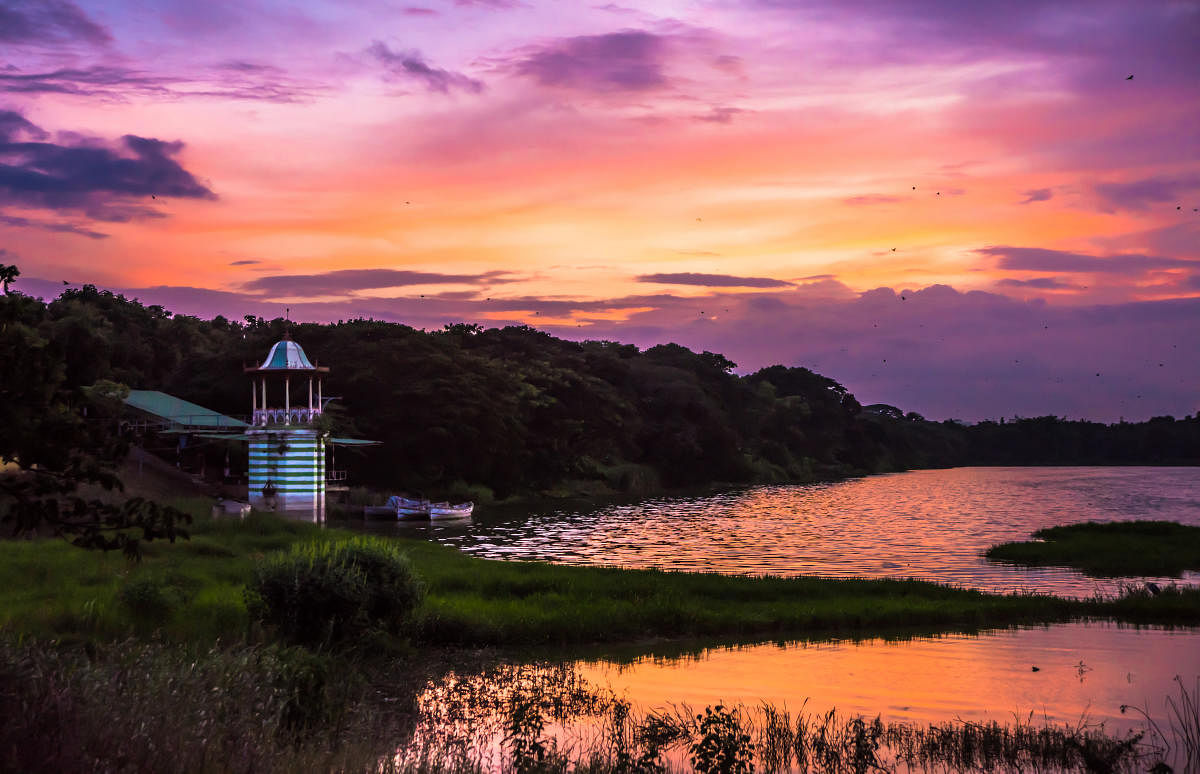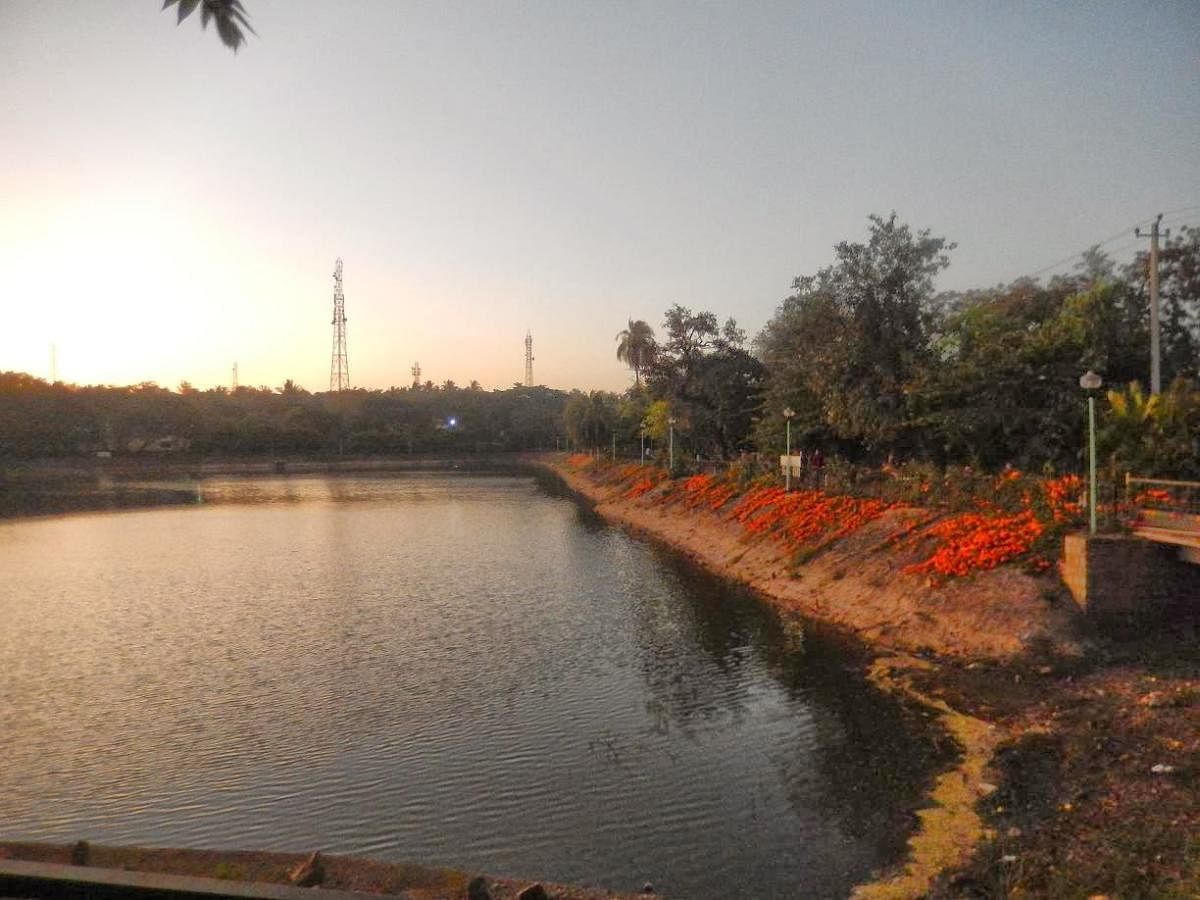

Probably the most popular locale that served as a muse is the UK’s Lake District. The various water bodies that dot its landscape inspired not only the Lake poets (William Wordsworth, Samuel Coleridge, Dorothy Wordsworth, Charles and Mary Lamb and others) but other creative geniuses (like Beatrix Potter and John Ruskin) as well.
"But the idea of a creative genius being inspired by a place is neither new nor restricted to the Western world," says Pushpa Poonacha, a Kannada and Kodava poet. Around a thousand years ago, in South India lived three literary giants, Pampa, Ponna and Ranna, who earned the epithet the ‘three gems’ of the Kannada world. One of them was so taken up by the beauty of a town Banavasi on the banks of River Varada that he became synonymous with the place.
Dharwad's Sadhankeri
Centuries later, Jnanapitha awardee Dattatreya Ramachandra (Da Ra) Bendre formed the Geleyara Gumpu (Group of friends), a literary and cultural circle of peers, in Dharwad.
A teacher by profession, Bendre Mastra would write under the name Ambikatanayadatta, 'Datta, son of Ambika'.
In 1924, his mother Ambika passed away. In the years that followed, he would lose six of his nine children. In this tragic times, his uncle gifted him a house in Sadhanakeri, Dharwad.
The place was set in nature. People who know about the inspiration he drew from the lake located right in front of his house.
It was here that he wrote some of his most celebrated poems including Baro Sadhanakerige (Come back to Sadhanakeri). He would claim that a piece of paradise had descended upon this house. Bendre had an inseparable bond with the nearby lake of the same place name and which inspired him to write.
Jayalakshmi Patil, a drama artiste and Kannada writer, says, "Bendre was a magician of words; only he could make his words both simple and difficult at the same time. When you hear them, they sound very easy. But when you sit and think about them, you will realise around ten different perceptions."
Mysore's Kukkarahalli
In the middle of this lake is a green island with many white birds perched on its trees. The Chamundi hill was visible across the kere.
The sunset over this lake inspired Jnanapitha awardee K V Puttappa (Kuvempu) to write the celebrated poem Kukkarahalli Kereya Mele.
Having studied and worked in Mysuru, Kuvempu would frequent this lake and even label it the swarna sarovara, the golden lake.
We imagined the route he would have walked and the bench he would have sat on many decades ago. Kukkarahalli kere finds mention in R K Narayan’s My Days, S L Bhyrappa’s Vamshavriksha and G S Shivarudrappa’s works as well.
Jayant Kaikini, one of the foremost Kannada writers today, says, "The reader imagines that the poet sits in the park and watches the sunset. But this doesn’t mean that the poet writes their work right there itself."
"Kuvempu would go on daily walks around the kere. He might also visit the Chamundi temple, go to his son Tejaswi’s place in Chikmagalur and his native place Shivamogga. However, finally, it must have been at his desk that he would write what he is able to create from these many sources of inspiration."
A pet named Kivi
Kuvempu's elder son K P Poornachandra Tejaswi studied in the University of Mysore. He abandoned his life in the city to live as a farmer on his coffee estate in Mudigere in Chikmagalur. His love for dogs comes out when his works speak of Kivi (literally meaning ‘ear’ in Kannada) a household canine, commonly recurring as a character in a number of stories, such as Gaadli, An indentured spirit, and the novel Carvalho.
Poornachandra's wife Rajeshwari says on a YouTube video that the author bought Kivi home when it was a 20-day-old spaniel. Poornachandra would take the dog on a scooter from the estate to Mysuru. En route, at Belur, children would point out the celebrity dog to others and say, "Look at Kivi going on a scooter!"
Tejaswi's sources of inspiration were also found in and around his estate.
Kuvempu used to come often to his son’s house. There was a jari (brook) near the house. Kuvempu liked the sound of the flowing water, especially during the monsoons. This inspired him to write the Kannada poem Jariya Jadinali.
Jyothi Mahadev, a Kannada writer who lives in Manipal, says that "those places which remain in an author as a part of them becomes a source of inspiration for them. The environs in which one grows up has an influence upon the person and this is seen in their writing. Such places and environs give writers an opportunity to help discover themselves and different dimensions."
Sometimes, points out Jyothi Mahadev, an author trained in a different profession which often becomes a recurring theme in their writing. For instance, renowned author Nagaraj Vasthare who is an architect describes architecture in their stories and novels. His other passions are also delicately weaved into his works. Similarly, Dr Guru Kaginele, who lives in the US, wrote of the life of a doctor in his books. Medicine is his inspiration and the medical world shapes his works.
Mumbai's local trains
The former Bombay Presidency was home to a number of Kannada writers such as V K Gokak, Girish Karnad, Yashwant Chittal, Shantinath Desai and Jayant Kaikini. Yashwant Chittal would sit on a swing in his house in Mumbai and look out at the sea by habit. Some modern writers like Tulsi Venugopal, Mithra Venkatraj and Girija Shashtri are from the region.
Jayant Kaikini would travel by the local train and gaze outside the window. Like in many of his stories and essays, Kaikini’s works such as Bannada Kaalu and Touring Talkies are about life in Mumbai as he has seen it.
Jyothi Mahadev says, "These scenes need not necessarily be experienced by the author but they are described in such a manner that the reader feels as if they have seen it with their own eyes. It is like the author brings forth a trailer for the reader to introduce them to the world he speaks of."
Kaikini laughs: "When people hear I'm from Gokarna they make assumptions that I like the sea a lot."
Kaikini himself disapproves of these iconic associations and says that these are simplistic, romantic approaches of the past which fail to gauge the writer's mind. "A writer needs no such place or thing to inspire them. What would really motivate them to write is a theme," he adds.